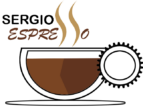Introduction
In the journey of preparing for Product Manager interviews at top tech companies like FAANG, candidates encounter a myriad of challenging questions. One key to success is mastering the use of structured frameworks to provide coherent and comprehensive responses. In this blog post, we will explore how to effectively navigate through the question: How would you build a monitoring device for elderly people? This question tests a candidate’s ability to empathize, innovate, and bridge technology with real-world needs. Let’s dive into applying a structured approach to come up with a compelling answer.
Detailed Guide on Framework Application
To tackle this question, we will use the CIRCLES Method™, a popular framework for product design questions introduced in ‘Decode and Conquer: Answers to Product Management Interviews.’ The CIRCLES Method™ is an acronym that stands for Comprehend, Identify, Report, Cut, List, Evaluate, and Summarize.
- Comprehend: Start by understanding the user. For our elderly monitoring device, we need to ask: Who are the elderly users? What are their challenges and limitations?
- Identify: Next, identify the user’s needs. Elderly individuals might require monitoring for safety, health, or social reasons. Identify the primary objective for the device – is it to detect falls, monitor health vitals, or provide a way to communicate with caregivers and loved ones?
- Report: Report the user requirements. This is where you articulate the specifications the device must meet, such as ease of use, non-invasiveness, accuracy, and reliable alert systems.
- Cut: Cut through the non-essentials. Prioritize features based on the identified needs, disregarding any unnecessary complexities or functions that do not serve the primary goal of the device.
- List: List the solutions. Brainstorm potential features that align with the elderly user’s needs – perhaps a wearable with fall detection, an easy-to-use SOS button, or integration with emergency services.
- Evaluate: Evaluate trade-offs. Consider the implications of each feature – for instance, wearable devices need to be comfortable, and their use should not compromise privacy or dignity.
- Summarize: Summarize your solution. Clearly outline the proposed device, its key features, and how it addresses the user needs and requirements you previously identified.
Applying this framework, let’s construct an answer:
“As a product manager tasked with creating a monitoring device for the elderly, I would first seek to understand the nuances of the elderly population’s daily life. Based on my preliminary knowledge and available research, I’d consider the common challenges such as mobility issues, chronic health conditions, and the desire for independence. Prioritizing safety and health monitoring, I’d propose a wearable device tailored for ease of use and comfort, equipped with fall detection sensors, an emergency SOS button, and a simple interface to track health vitals. The device would also need a connected service to alert family members or medical professionals in case of abnormalities. To balance functionality with user acceptance, the wearable would be designed as discreetly as possible to maintain the dignity of the users.”
In applying this approach, remember that you don’t have all the data. Use your general knowledge to make educated guesses – for example, the prevalence of falls among seniors is a known issue, suggesting that fall detection would be a valued feature. Also, consider real-world constraints such as battery life, device cost, and accessibility for users with various disabilities.
To communicate effectively during the interview, be clear and articulate in your approach. Use the CIRCLES framework as a guide, but also show empathy for the users and creativity in your solutions. Convey your thought process in a structured way, ensuring that your reasoning is easy to follow and that your conclusions are based on the user’s needs.
Conclusion
In conclusion, using the CIRCLES Method™, we’ve analyzed how to build a monitoring device for elderly people by focusing on their unique needs and devising a product that balances functionality, usability, and dignity. The key takeaways for aspiring product managers are to empathize with users, prioritize based on core needs, innovate within constraints, and communicate your solutions clearly. Practice using these frameworks and strategies to prepare for your FAANG interviews and boost your chances of success.
